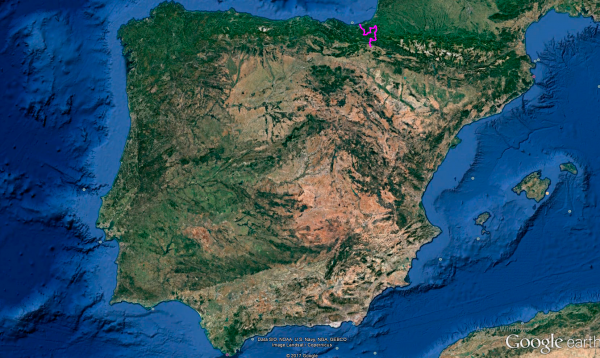
Distance 213 Km. distributed across roads of the following types:
Autopistas y autovías: 14.1 km. Carreteras Nacionales: 44.4 km. Autonómicas de 1º nivel: 31.8 km. Autonómicas de 3º nivel:106.7 km. Asfalto o cemento sin nombre: 16 km.
Sections: 18
Autor: Gérard
Descripción:
Winding route that will bring you closer to DONOSTI, one of the most beautiful cities in the world, starting from Pamplona. Incredible landscapes and curves with Navarra and Gipuzkoa as protagonists.

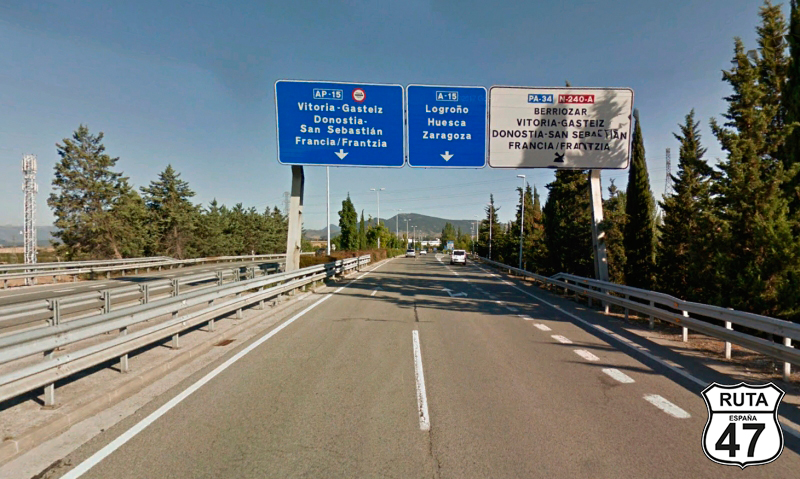
Tramo 1: PAMPLONA - N-240A (4.1 Km)
Compared to the size of routes we are accustomed to in motorbike trips, this one is a bit short, but not any less attractive. After all, it's Donosti. Considered one of the most beautiful cities in the world, we've decided to arrive early and take advantage of the afternoon to stroll through its old town, the Concha Bay, and other points of interest in this magnificent city.
So, we leave Pamplona through one of its bypasses: the PA-34, which, like any road of this kind, has quite a bit of traffic. At the northern edge of Berriozar, we leave this fast road to join the N-240A, heading towards Donosti, Vitoria, and France.
Final del tramo

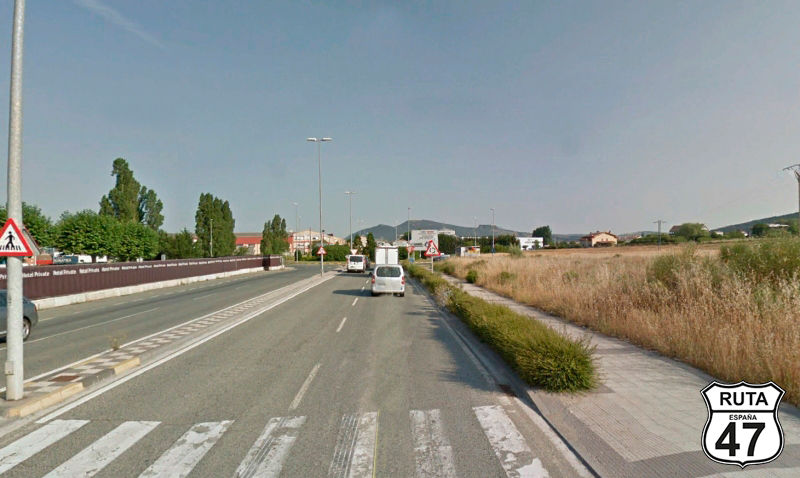
Tramo 2: N-240A - NA-4100 (0.9 Km)
After leaving the bypass, we reach a roundabout where we turn left, and after passing another roundabout where we should continue straight, we arrive at a third one where we finish this short stretch and where we have to turn right towards Aizoain and Lizaso. Right at this intersection is the building of Radio Pamplona, from the Ser.
Final del tramo

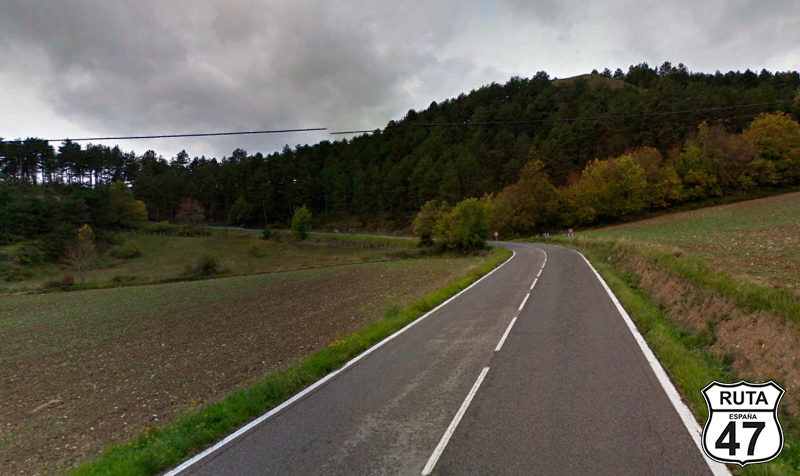
Tramo 3: NA-4100 - NA-4230 (16.7 Km)
Although we have passed through a couple of urban centers absorbed by the capital of Navarre, we will say that from here on, we leave Pamplona behind to start riding on solitary roads, like this third-level regional road that will take us to the Ultzama Valley, where mushrooms abound, on a not too narrow and perfectly paved asphalt, leaving behind the town of Marcalain where shortly after, we begin a small ascent with a couple of sharp curves.
After the 21st kilometer of the route, we leave this yellow road at a right turn.
Final del tramo

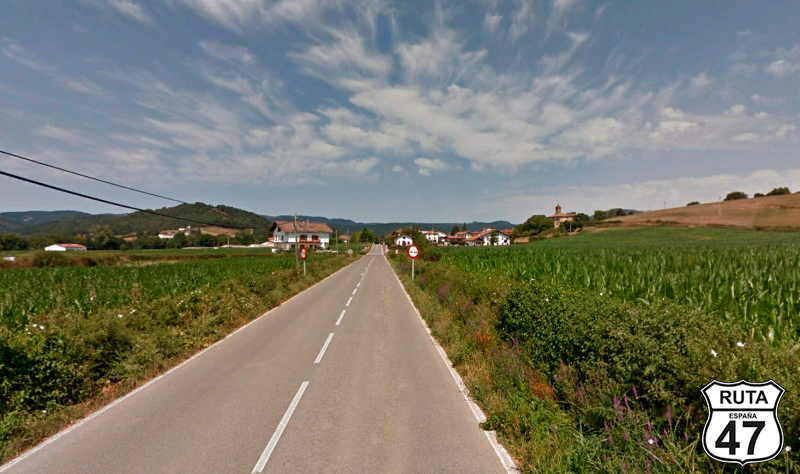
Tramo 4: NA-4230 - N-121A (8.1 Km)
We start the fourth stretch of this route on the NA-4230, also yellow, and just 300 meters away, we encounter one of the treasures of Navarre's nature: El Bosque de Orgi.
With no time to stop but with the promise to return someday to visit it, we continue the route through the Ultzama Valley, crossing the town of Iraitzoz to shortly after finish the stretch at a merge onto a national road where we will have to make a stop and the corresponding turn, this time to the right.
Final del tramo

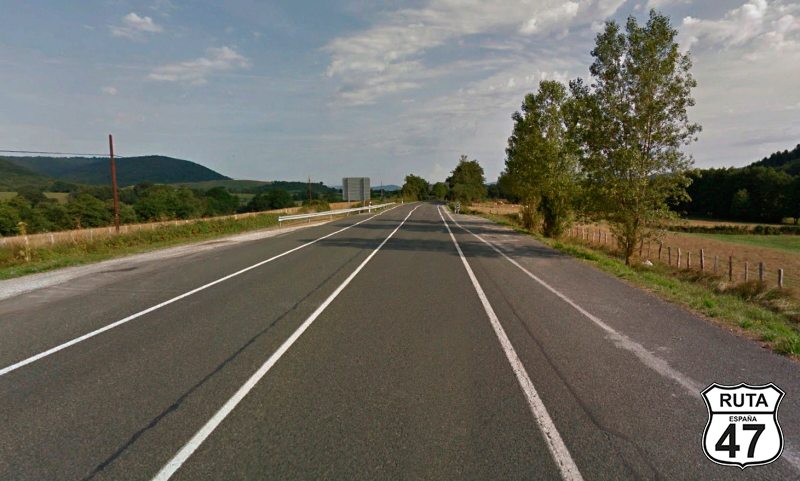
Tramo 5: N-121A - NA-2520 (5.2 Km)
We now head south on the N-121 A, a road with quite a bit of traffic, especially from trucks, as it is perhaps the fastest way to get to Pamplona from France. The route is boring, as in the 5 km we will cover on this road, there are only two curves, right and left consecutively, and both are open.
At a distance of 3.7 km from the start of the stretch, it is important to turn right to enter the town of Olague, as after passing this town, the stretch ends at a left turn towards Egozkue, Urtasun, and Zubiri.
Final del tramo

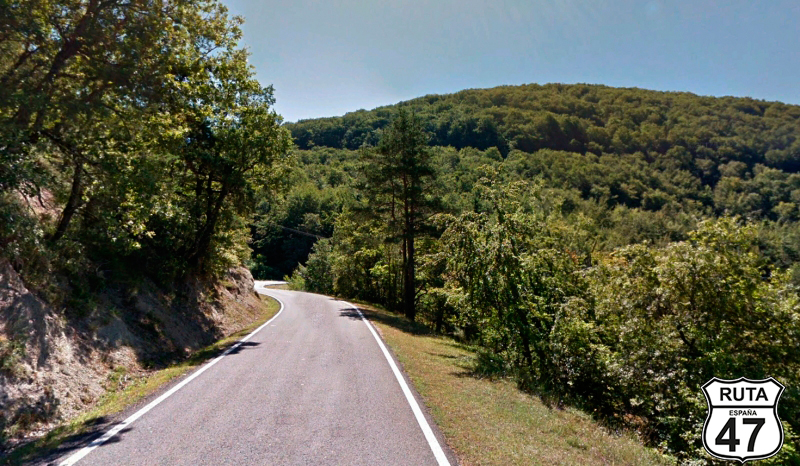
Tramo 6: NA-2520 - NA-138 (13.1 Km)
From this moment on, the real curves of this route begin as we enter mountainous terrain, and we won't leave it until we reach Donosti.
So, we set out to head east on the NA-2520, which connects the N-121 A with the N-138, which we will take later, through the Egozkue pass where we will ascend from 550 m to 900 meters in altitude over 7 km with its corresponding descent.
The entire layout of this stretch is perfectly paved and very narrow, without horizontal signage, and curved, so we'll take it easy to enjoy a smooth ride. The landscape is dense, with vegetation on both sides of the road, at least during the ascent and the first half of the descent, although sometimes a clearing opens up, allowing us to extend our view a bit.
We finish the descent from this beautiful Egozkue pass upon reaching Urtasun, where this stretch also ends. Here, we make a stop before turning left at a junction.
Final del tramo

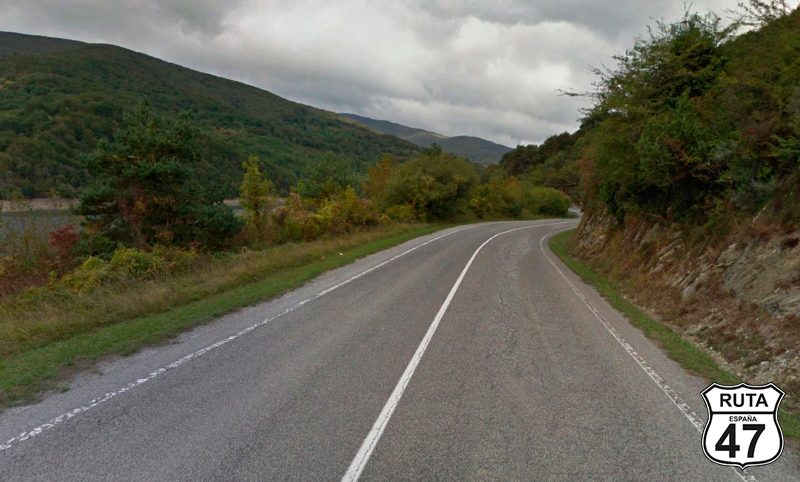
Tramo 7: NA-138 - NA-1740 (7.2 Km)
We are now on the NA-138, through which, heading north, we reach Eugi, a town preceded by its reservoir. It is likely that we will come across several motorcyclists, as it is common for Navarre bikers to come here due to its proximity to Pamplona and the quality and layout of the route.
Once in Eugi, we continue the route along one side of the reservoir until, after passing the 11th km marker, we turn left towards Irurita.
Final del tramo

11
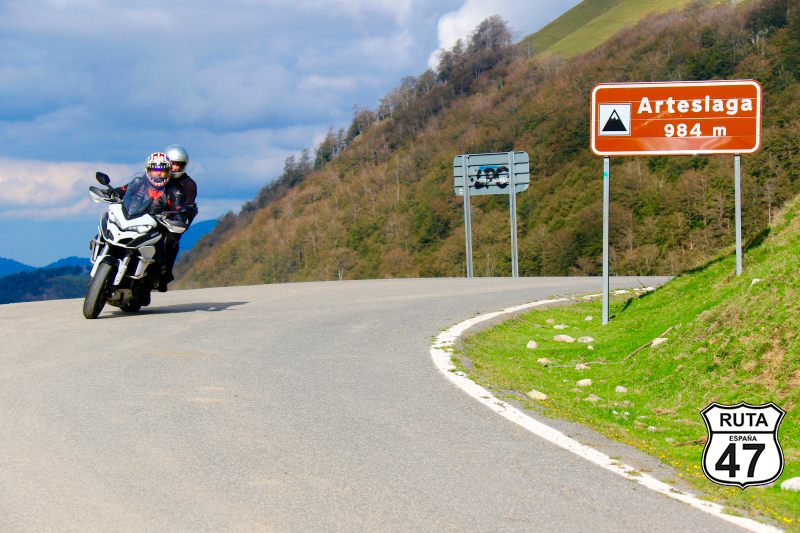
Tramo 8: NA-1740 - Irurita (21.4 Km)
This stretch, like many others, is of great scenic beauty. Through it, we will ascend to the Artesiaga pass through the Quinto Real Forest, a beech forest where it is common to find people looking for mushrooms.
The curved ascent adorned with beeches and moss on both sides of the road, where the excess vegetation allows the sun's rays to pass for a few hours a day, combined with the narrowness of the road, allows us to enjoy a calm drive.
Once at the summit, it is worth making a five-minute stop to delight in the views of the Baztan Valley. In the distance, the mountains behind which lie the Gipuzkoan and French coasts. A spectacle for the eyes.
We begin the descent, with a much more open but equally curved landscape that leads us to Irurita at a T-shaped intersection where we will turn right towards Elizondo and Dantxarinea.
Final del tramo

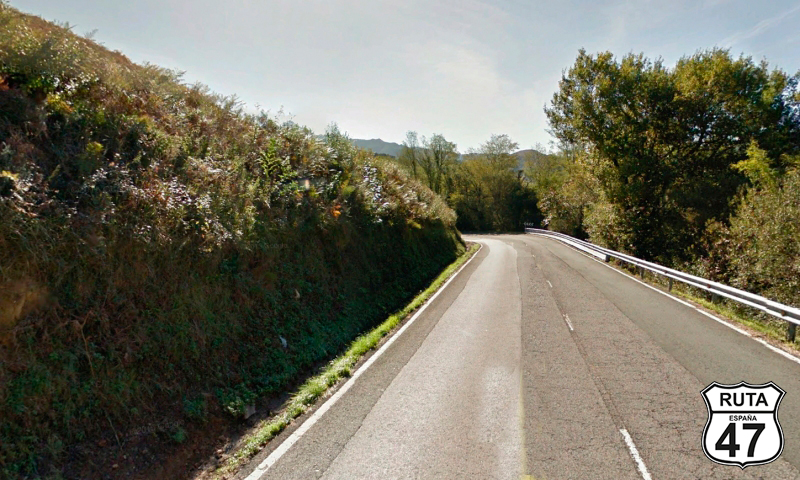
Tramo 9: Irurita - NA-4401 (25.3 Km)
We are now heading towards France, where we will reach the border with the neighboring country but without crossing to the other side, after covering 25 km on this National road.
Initially, we should drive at a slow pace as we will pass through the centers of urban nuclei such as Elizondo and Elbete, towns separated by the Baztán River, and then we can accelerate a bit to climb the Otsondo pass, another favorite for Navarre bikers.
In the clearings that open up during the descent, you can appreciate the French coast in the distance, while down below, we see a junction that we will take, leading us to Urdax, a small town with impressive caves filled with stalagmites and stalactites.
We continue on this road until we reach Dantxarinea, where this stretch ends, a commercial paradise for the French who come here to fill up their fuel tanks and the trunk with tobacco and alcohol. As a curiosity, here you will find the largest tobacco shop in Spain, and we can stamp the Passport of Route 47 at the Otxondo and Oihana restaurants, where, by the way, the food is exquisite.
Final del tramo

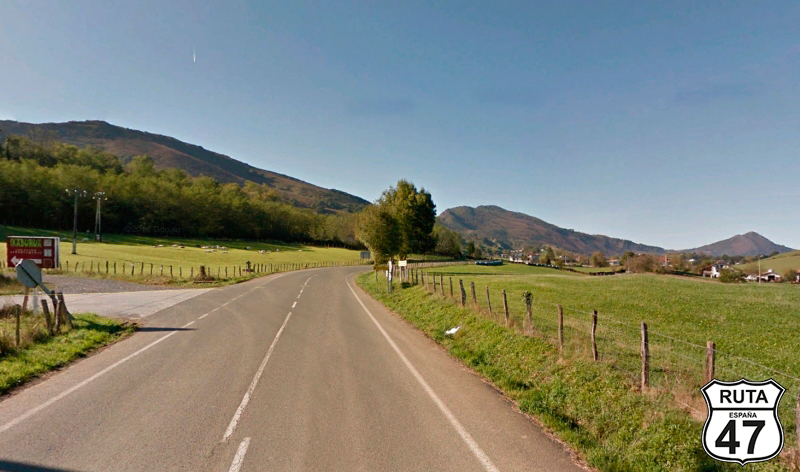
Tramo 10: NA-4401 - Zugarramurdi (4 Km)
With almost half of the route covered, we continue staying in Navarra, now heading towards Zugarramurdi, famous among other things for its caves, where we arrive in just 5 minutes on a rather straight and well-paved route.
Here, we can stop for a refreshment at Rte. Azketa, with good parking and good food.
Final del tramo

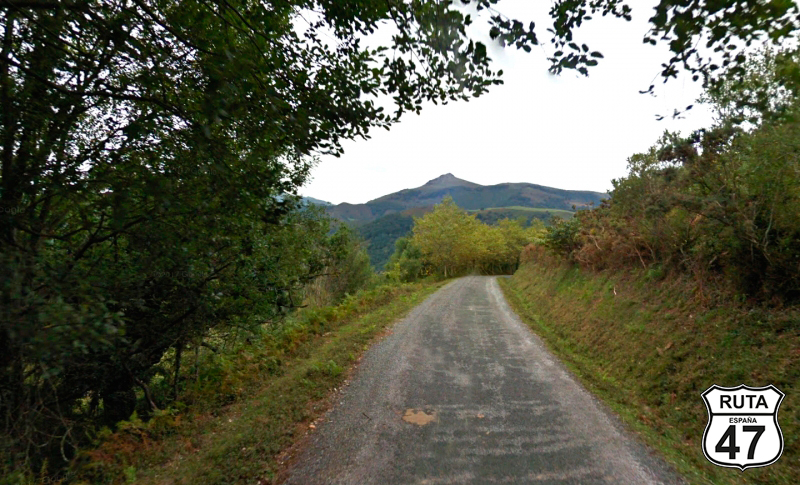
Tramo 11: Zugarramurdi - Etxalar (16 Km)
We leave behind Zugarramurdi and its caves, taking a local road that will lead us to Etxalar. At times, it improves a bit, but it must be said that the overall condition of this stretch is appalling. It's important to clarify that it is asphalt, but being a local road owned by three municipalities in the area, no improvements have been made for years, and the asphalt is very worn, with potholes, and sometimes even moss.
We don't usually choose such poorly maintained roads, but this one stands out for the beauty of its landscapes where, as my good friend Manuel (Barcelona) told me in a Navarider edition: "I loved this stretch. You could see all the way to the sea." He was right. At the highest point, it's worth stopping for a while, looking back, and admiring the expansive landscape that extends to the horizon with the sea in the background and a myriad of mountains on the sides.
Manuel travels on a BMW 1200 RT, and we have done this stretch even with "R" bikes, and it's not that bad. Just three recommendations: 30 km/hour, patience, and enjoy.
After 16 km on this road, we arrive in Etxalar entering through a narrow street that leads to a church where we will make a stop and turn left.
Final del tramo

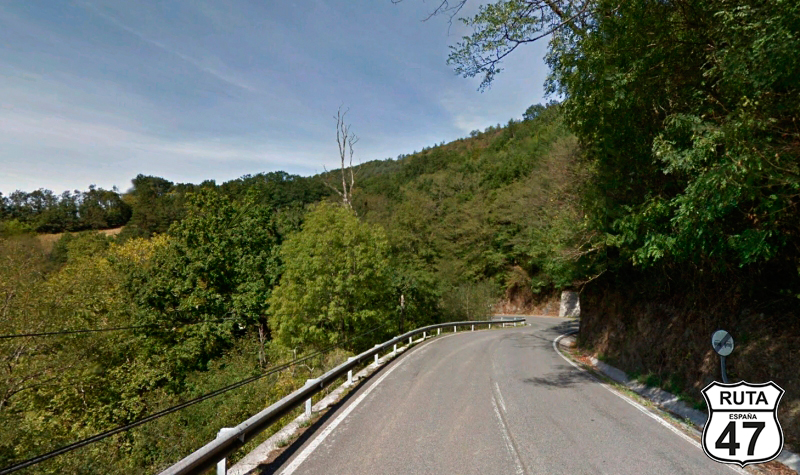
Tramo 12: Etxalar - N-121A (4 Km)
We are gradually moving further away from the French border along this wide and winding route until, at kilometer 126 of the route, we reach a roundabout where we must continue straight to pass under a bridge with the N-121 A, the road we must take towards Pamplona.
Final del tramo

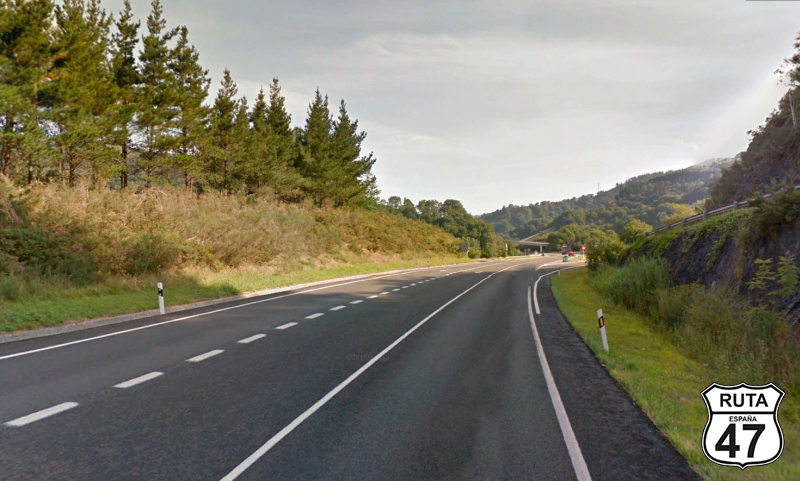
Tramo 13: N-121A - NA-1210 (13 Km)
We are now heading south towards Pamplona to turn right 13 kilometers later. The Bidasoa River accompanies us, sometimes appearing on the left and other times on the right as it zigzags at our feet over our straight path built to streamline the traffic of trucks coming and going to France. If you wish, you can travel along the old route of this road following the course of the river, but we have preferred to ride on this wide and fast National road to return to the regional roads in a moment.
After passing three tunnels, we reach Sumbilla, a town that we leave aside, and just at PK 47, we see the sign announcing the detour we must take towards Doneztebe - Santesteban.
Final del tramo

47
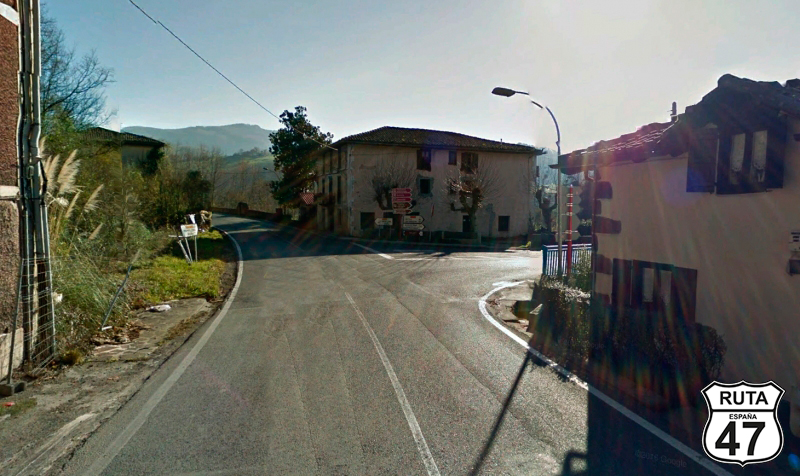
Tramo 14: NA-1210 - NA-170 (0.40000000000001 Km)
This is undoubtedly the shortest stretch of the route, only 400 meters long.
Following the course of the Bidasoa River, we reach Santesteban, and once here, we will turn left at a junction towards Leitza and Lekunberri, towns that we will not pass through.
Final del tramo

25
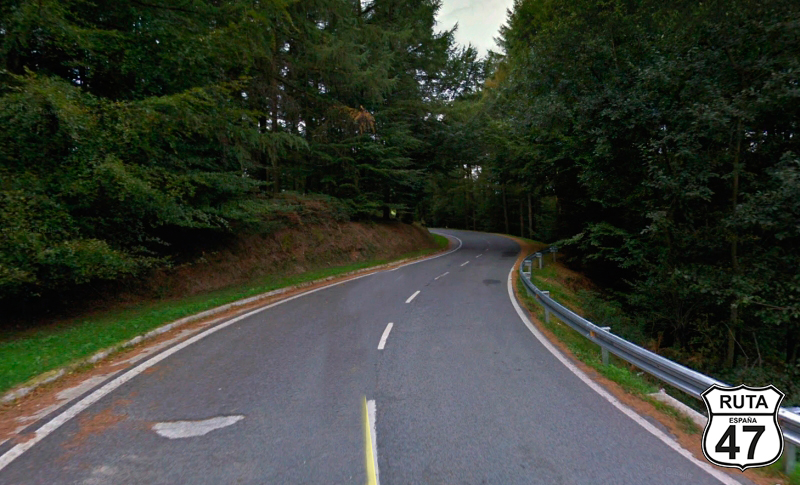
Tramo 15: NA-170 - NA-4150 (24.6 Km)
Having covered two-thirds of the route, we approach this section by crossing the Bidasoa River that leads us into Santesteban, a town that we will pass through always following the signs guiding us towards Leitza and Lekunberri.
Practically next to Santesteban is the town of Elgorriaga, with its saltwater spa where, if you feel like it, you can make a stop to enjoy its thermal waters with such a high salt concentration that you can take a nap floating in the water, and it's not a joke.
We continue through a valley constantly ascending on this incredibly fun road until, at the highest point, 700 meters above sea level, we reach the Hotel Basa Kabi. Right in front is the road we must take to start the next section towards Goizueta.
Final del tramo


Tramo 16: NA-4150 - GI-3410 (29 Km)
The asphalt is much narrower in this last stretch belonging to the Autonomous Community where we constantly descend.
A constant in this stretch is the hydroelectric power plants that we find along the way and that are powered by the Urumea River, which at all times borders the Peñas de Aya Natural Park on its western side and will accompany us throughout the stretch, following its course, which can give an idea of the winding nature of this third-level regional road.
We arrive in Goizueta, a town that we cross through a narrow street, and 14 km later, we leave the Community of Navarra in a right turn to enter the Basque Country, specifically Gipuzkoa, whose capital is our final destination for the day.
Final del tramo

29

Tramo 17: GI-3410 - A-15 (10 Km)
Just 30 km from Donosti, the Urumea River continues to accompany us, and at times, an old stone-built hydroelectric power station appears hidden, camouflaged by the wise nature amidst the green landscape of the area.
It's curious that despite the change in Autonomous Community, the asphalt hasn't varied much. It's true that it has widened a bit, but both are similar and in optimal condition. It seems that the Basque Country also invests in the preservation of its roads, which is appreciated.
We continue on this road that takes us to one of the industrial areas of Hernani, and without turning at any intersection, we come face to face with the A-15: the highway that would have brought us directly from Pamplona in just 60 minutes. "But that's for cars."
Final del tramo

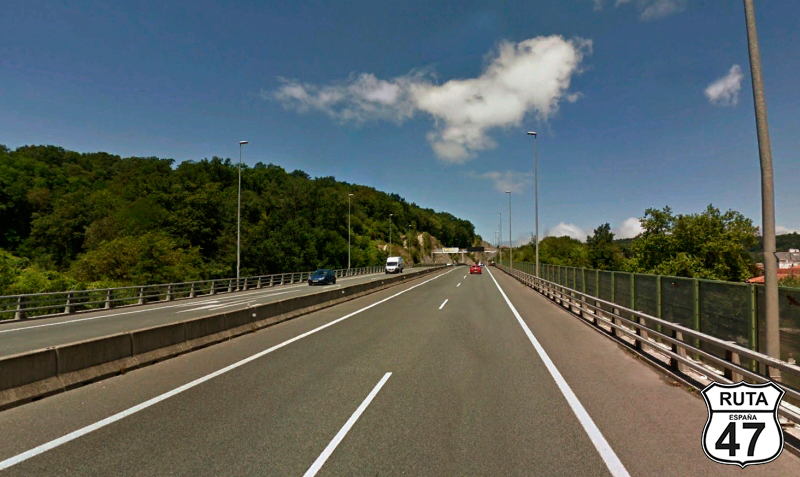
Tramo 18: A-15 - DONOSTI (10 Km)
We tackle this last stretch on this type of road that motorcyclists like the least: highways. Like all of them, it doesn't have any special features. It's fast and boring, but we are sure that it will take us into Donosti, which, as we commented in the first stretch, is considered one of the most beautiful cities in the world by many. So, taking advantage of the fact that we have arrived here after covering just over 200 km, we won't miss the opportunity to do a bit of tourism.
Final del tramo
